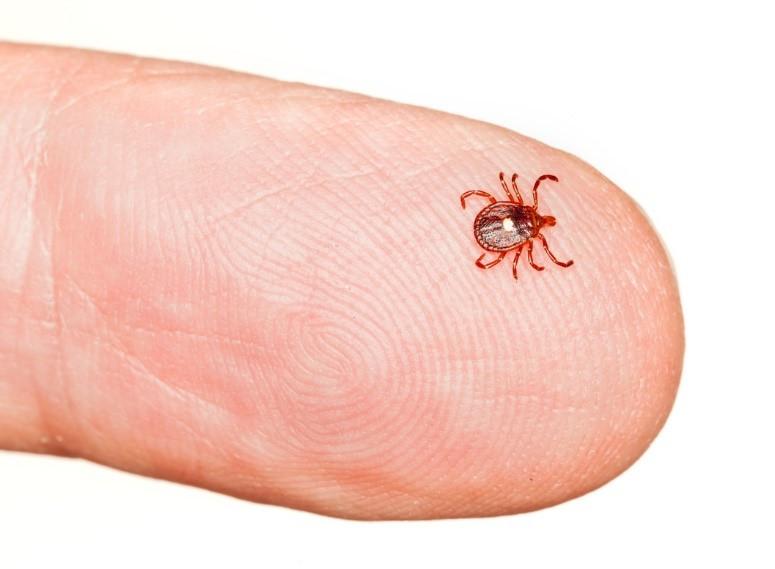With the US tick population multiplying and expanding into the colder northern states, Lyme disease has suddenly become a concern for increasing numbers of people, especially in the months of June, July, and August when people are outdoors more often.
But despite its growing prevalence, many people still don’t fully understand Lyme disease or think that all you need is an antibiotic if you get it.
Here’s what you must know--the complete story on Lyme disease, and how you can fight or prevent it.
Lyme disease—the emergence of a mystery
Lyme disease originated around 1975 and was named after the town of Lyme, Connecticut, where it was first identified.
Within two years, the deer tick was linked to the infection.
Then in 1982, scientist Willy Burgdorfer, Ph.D. discovered the bacterium responsible for the infection and named it after himself--Borrelia burgdorferi. Interestingly, it is a cousin of the bacterium that causes syphilis.
The Lyme bacterium is like MacGyver and has a knack for hiding and survival. It can live inside your cells and encase itself in a “cyst.” That’s why treatment can be so difficult and it can recur after antibiotics.
It’s also difficult to diagnose. There are many species of the Lyme bacterium, but only a handful of strains are detectable with lab tests.
It starts with a tick bite—or maybe not!
The typical Lyme infection starts when a tick that’s carrying the bacterium jumps off a deer, bird, rodent or other animal and latches onto you.
It immediately starts numbing your skin so you can’t feel it. It prefers dark, secluded areas such as your armpits, behind your ear or your scalp.
But ticks aren’t the only guilty parties. Lyme can also be spread by mosquitoes, spiders, fleas, and mites.
After being bitten, one of the first signs of Lyme is a bulls-eye-like rash on your skin, but if a tick didn’t do the biting (and you were instead bitten by another Lyme-carrying insect), the rash may be shaped differently.
In addition, you might not get a rash at all! Fewer than 50 percent of people who contract Lyme don’t recall getting a rash, and the CDC estimates that at least 30 percent of Lyme sufferers do not develop a rash.
The great imitator
Although the typical signs of Lyme disease are flu-like symptoms and a rash, it is commonly called “the great imitator” because it can mimic many other disorders such as:
- Multiple sclerosis (MS)
- Rheumatoid arthritis
- Parkinson’s disease
- Chronic fatigue syndrome
- Fibromyalgia
- ALS (Lou Gehrig’s disease)
- ADHD
- Alzheimer's disease
- Autoimmune disease
- Migraines
- Vision and hearing problems
- Cognitive problems, brain fog
- Heart problems
- Facial palsy
It’s not that rare and it’s often missed
According to the CDC, 300,000 new cases of Lyme disease are diagnosed in the US each year—that’s 1 1/2 times the number of people who are diagnosed with breast cancer or the flu each year…so it’s not as rare as you might think.
As far as testing goes, current estimates show that the standard ELISA test misses at least 35 percent of Lyme cases.
That’s because the Lyme bacterium can infect your white blood cells, and when this happens, they don't respond by producing antibodies like they should. Since the blood tests measure white blood cell antibody production, you can get a false negative.
So people can suffer for a long time without being properly diagnosed.
Antibiotics don’t always work
Lyme is treated with antibiotics, but some people don’t fully recover after the initial treatment and their condition becomes chronic. Then you may be facing even stronger antibiotics as well as pain medications, steroids and/or anti-inflammatories.
Fighting Lyme disease—prevention first
As is the case for most illnesses, prevention is the key with Lyme disease.
If you spend time outdoors, check for ticks daily on yourself, children and pets.
Bathe or shower within two hours after coming in from the outdoors if possible.
If you’ve been in a tick-infested area, do a full body check and examine your clothing for ticks. Tossing your clothes in the dryer on high heat for an hour will kill any you may have missed.
And see a doctor immediately if you develop a bull’s-eye or other suspicious rash.
Other ways to fight back
1- Engage the power of the right diet
Nourishing your body with a healthy diet is number one.
Having a nutritious diet of whole foods helps create a healthier gut environment. Since your gut is where most of your immune system resides, by promoting gut health, you are also supporting strong immune function!
Plus antioxidant vitamins and minerals can help fight the damage caused by infections and viruses, and the phytochemicals found in fruits and vegetables have been shown to have immune-enhancing properties.
2- Supplement with probiotics and vitamin D
Having a strong immune system is critical to fighting and preventing infections of all kinds, and when it comes to immune support, probiotics and vitamin D are the superstars.
Super Shield multi-strain probiotic formula can help keep your population of friendly gut bacteria strong and ready to fight back against “invaders” like viruses and bacterial infections. Plus Super Shield can help your gut flora bounce back from the harmful hit it takes from antibiotics.
Vitamin D is crucial to help control your immune system’s inflammatory responses. Since vitamin D is a common deficiency (primarily due to limited food sources and our avoidance of the sun), supplementing with a top-notch formula like Optimum DK Formula with FruiteX-B can ensure your body has what it needs.
3- Additional measures
Here are other ways you can fight Lyme disease and other infections:
- Foods such as garlic, leeks, onions, radishes, and cabbage have anti-infectious properties.
- Helpful spices include thyme, fennel, clove, cayenne pepper, turmeric, and ginger.
- Mushrooms including cordycep, reishi and maitake have been shown to activate an immune response.
- Look for safe, natural bug repellents that contain garlic oil or essential oils such as rosemary, lemongrass, thyme, citronella, tea tree or eucalyptus.
To your health,
Sherry Brescia










